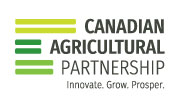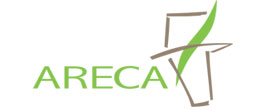Prevents Contamination, Often Required by Law in Alberta
Cleaning farm equipment is often a time consuming process. For this reason, many producers choose to avoid cleaning their equipment every time it is moved between fields, especially in this era of larger farms with a variety of fields and crops.
However, there are two major reasons to consistently clean equipment between fields in spite of the time commitment. The first is the risk of soil-borne diseases such as clubroot and the introduction of problem weeds into a field. Of these two categories, the first is of primary concern. The presence of clubroot, for example, can prevent the growth of canola in infected soil for four or more years.
The second reason is that it has become mandatory to do so in certain cases. Since clubroot was first discovered in Alberta in 2003, provincial legislation has required this practice for any equipment that has worked soil infected with the disease.
“And because producers may not know for sure whether they have clubroot in their soil or not, this essentially means that all seeding equipment moving between fields should be properly cleaned,” says Doon Pauly, a crop specialist with the Ag-Info Centre of Alberta Agriculture and Food (AF).
Disease and weed issues
Soil-borne disease is often brought into fields via tillage equipment. New weeds are often the result of seed brought into a field on harvesting equipment, although they can be brought in by seeding and tillage equipment as well, says Pauly.
When it comes to cleaning equipment as a weed control practice, he says the overall situation is generally less severe. This depends, however, on the kind of farming being done. “Seed growers, for example, invest a lot of time, effort and value into their seed crops. If their seed is rejected because of weed factors, it’s a major economic blow.”
In the case of certain noxious weeds, however, there are legislative factors at work that all grain and oilseed producers should be aware of. “Noxious weeds fall under pest management legislation, which means Agricultural Service Boards have the right to ensure compliance,” he says.
Cleaning process
Some methods of cleaning seeding and tillage equipment include steam cleaning and spraying with a diluted bleach solution, says Pauly. However, he says perhaps the easiest method is to hammer each shank until loose soil is knocked off or to scrape it off with a shovel. When it comes to cleaning harvesting equipment such as combines, options include sweeping, vacuuming or blowing out the combine or, in some cases, washing it out with water or a bleach solution.
When it’s not a matter of legislation, deciding on the frequency of cleaning equipment is often a matter of risk assessment, says Pauly. Developing an EFP can help producers make these choices. “An EFP helps producers walk through their operations and identify environmental risks and opportunities for improvement. In cases where producers cannot tackle the risk completely, it can help them identify ways to at least reduce the risk.”
Available Assistance
Information and assistance on crop management, as well as a number of other on-farm environmental practices, is available through a strong network of EFP Technicians throughout the province.
This article may be reprinted with the credit: Alberta Environmental Farm Plan
For more how-to fact sheets or other information, visit www.albertaEFP.com.
 Initiative
Initiative



